Boston Scientific's next innovation in Image Guided Programming
Vercise Neural Navigator 5 (VN5) Software makes it easier and more efficient to personalize your patients’ DBS journey.
Vercise Neural Navigator 5 (VN5) Software makes it easier and more efficient to personalize your patients’ DBS journey.
VN5 is Boston Scientific’s next innovation in Image Guided Programming. See stimulation to personalize therapy in each patient’s specific anatomy.*
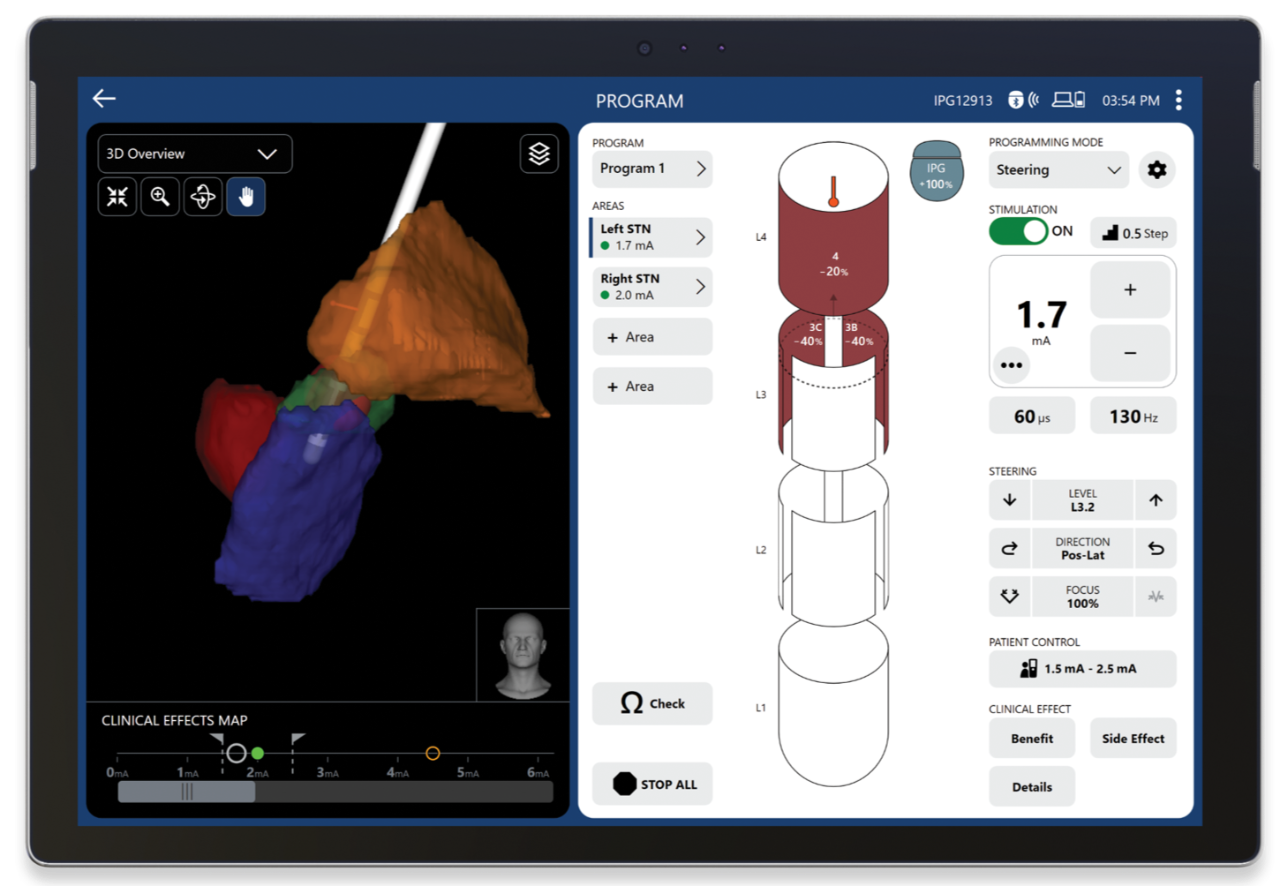
20 minutes
average programming time1
56% reduction
in programming time**
The new dashboard view shows your patient’s therapy at-a-glance for efficient decision-making.
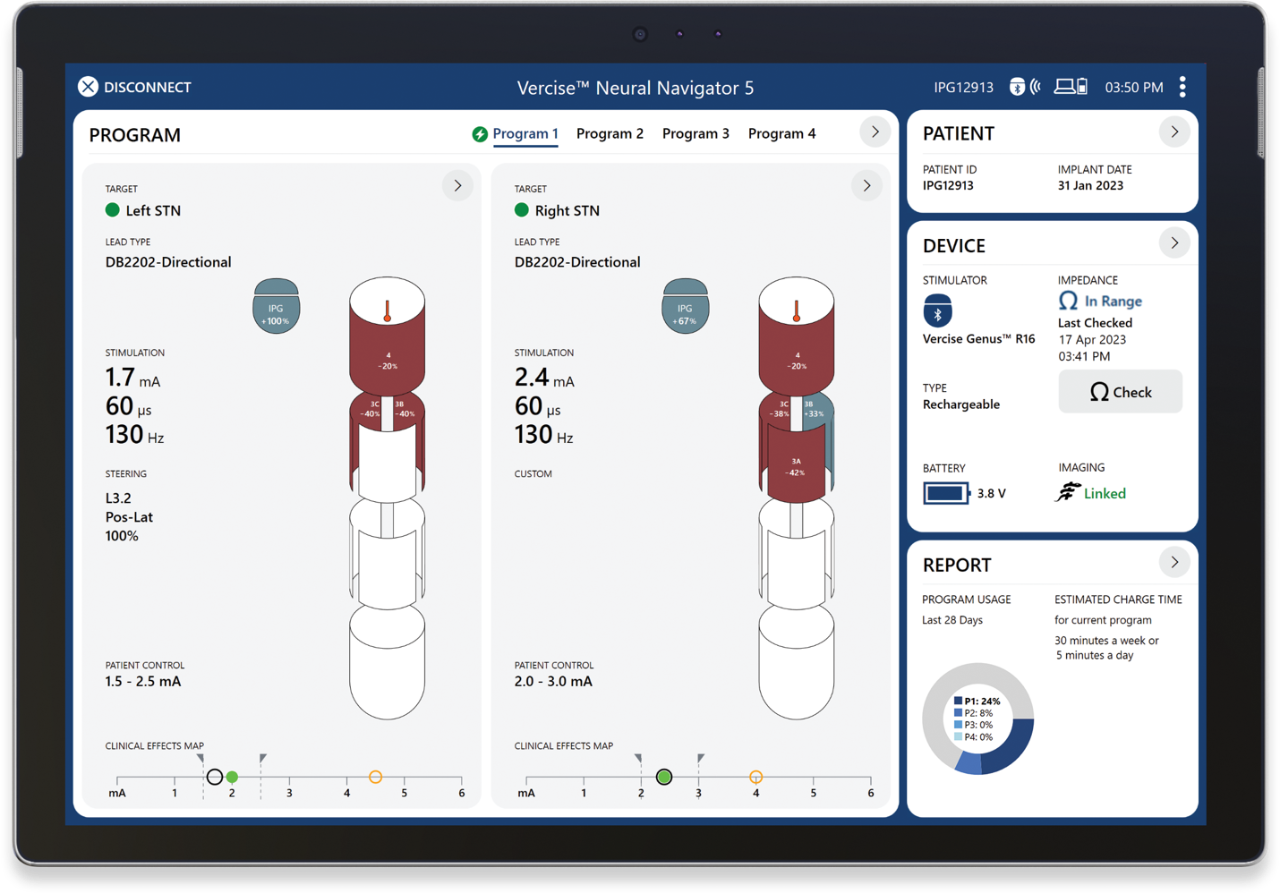
Manage side effects as your patient’s disease progresses with Image Guided Programming.
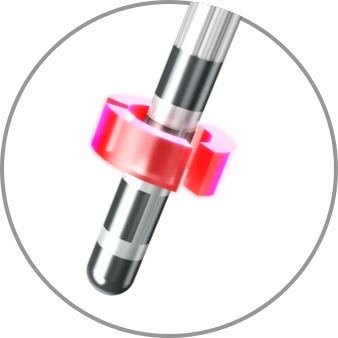
Monopolar
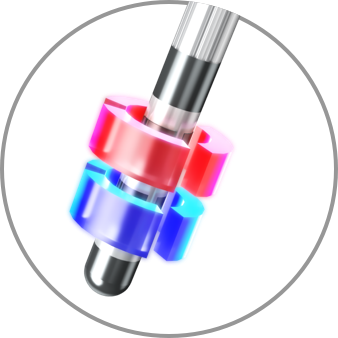
Bipolar
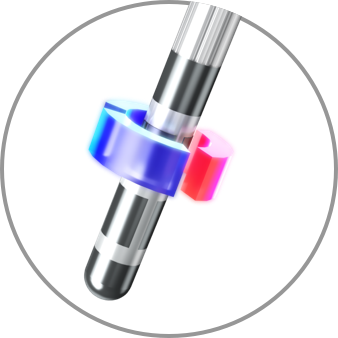
Bipolar Directional (Anodic Block)
Semi-bipolar and anodic stimulation capabilities are only available with Boston Scientific and are demonstrated to increase side effect threshold2,3 and improve efficacy.4
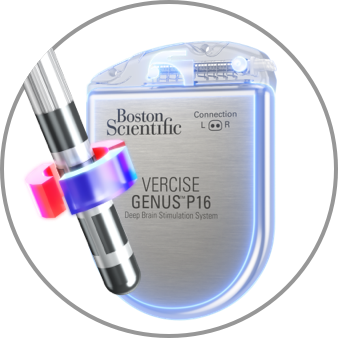
Semi-Bipolar
Anode divided between the IPG and the Lead
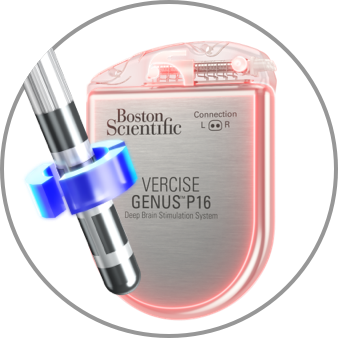
Anodic
100% Anode on the Lead, 100% Cathode on the IPG
Stim-on Steering enables simple and accurate assessment of stimulation along the entire electrode.
Pre-plan personalized therapy with Guide XT to make your time with the patient even more efficient.
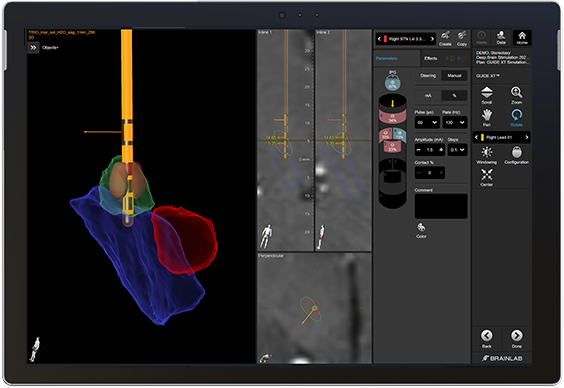
Pre-plan in Guide XT based on patient specific anatomy.
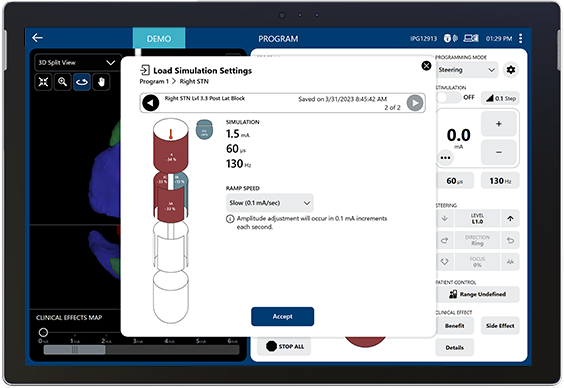
Load pre-planned stimulation when the patient is in the room.
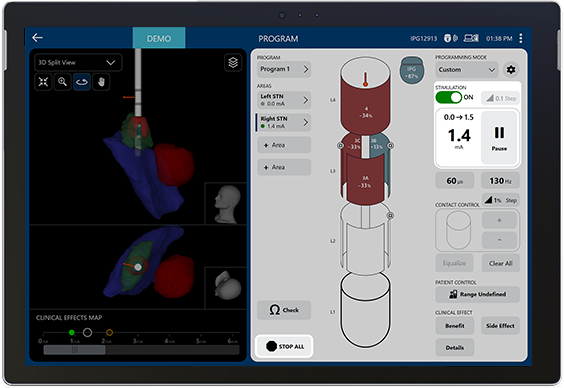
Automatically ramp amplitude as you clinically assess the patient.
Receive emails about the latest DBS advances, clinical data and product news.
Hear DBS insights and announcements as they happen.
If you are a patient looking for more information on DBS, Info for patients.
*STIMVIEW™ XT Technology is a visual representation of the estimated stimulation field.
**Image Guided programming in PD patients enables a reduction in programming time compared with standard clinical based programming (p=39).
***Information for competitive devices excerpted from literature published by Medtronic (M982261A015 Rev A, M017563C002 Rev A, M939241A051 Rev A, M927170A073 Rev A, M017562C002 Rev A) and Abbott (ARTEN600150429 - B, ARTEN600102238 - A) Schüpbach, Michael & Chabardes, Stephan & Matthies, Cordula & Pollo, Claudio & Steigerwald, Frank & Timmermann, Lars & Vandewalle, Veerle & Volkmann, Jens & Schuurman, P.. (2017). Directional leads for deep brain stimulation: Opportunities and challenges. Movement Disorders. 32. 10.1002/mds.27096.
REFERENCE:
1. Lange F, et al. (2021). Reduced Programming Time and Strong Symptom Control Even in Chronic Course Through Imaging-Based DBS Programming. Front. Neurol. 12:785529.doi: 10.3389/fneur.2021.785529 n=10
2. Steffen, J. K., Reker, P., Mennicken, F. K., Dembek, T. A., Dafsari, H. S., Fink, G. R., Visser-Vandewalle, V., & Barbe, M. T. (2020). Bipolar Directional Deep Brain Stimulation in Essential and Parkinsonian Tremor. Neuromodulation: Technology at the Neural Interface, 23(4), 543–549. DOI: 10.1111/ner.13109
3. Reker, P., Dembek, T. A., Becker, J., Visser-Vandewalle, V., & Timmermann, L. (2016). Directional deep brain stimulation: A case of avoiding dysarthria with bipolar directional current steering. Parkinsonism & Related Disorders, 31, 156-158. https://doi.org/10.1016/j.parkreldis.2016.08.007
4. Kirsch, A. D., Hassin-Baer, S., Matthies, C., Volkmann, J., & Steigerwald, F. (2018). Anodic versus cathodic neurostimulation of the subthalamic nucleus: A randomized-controlled study of acute clinical effects. Parkinsonism & Related Disorders, 55, 61-67. https://doi.org/10.1016/j.parkreldis.2018.05.015
Results from different clinical investigations are not directly comparable. Information provided for educational purposes only.
Caution: The law restricts these devices to sale by or on the order of a physician. Indications, contraindications, warnings, and instructions for use can be found in the product labelling supplied with each device or at www.IFU-BSCI.com. Products shown for INFORMATION purposes only and may not be approved or for sale in certain countries. This material not intended for use in France.